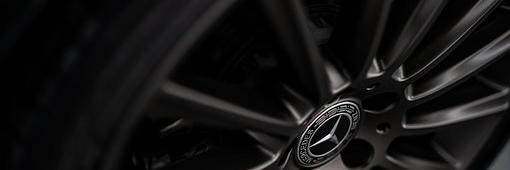Vipin Kumar's blog : How to Know Whether It's Time to Replace Your Tyres?

Knowing when to replace your Pirelli Tyres London will help you keep your car in great condition. It can be risky to drive on tyres that need replacing.
We've put together this quick guide to help you stay safe and maintain the tyres on your car because we know how difficult it can be to stay on top of industry standards and how know when to change your tyres. This quick guide will provide you with an overview of some of the typical causes and warning signs to watch for when it comes to tyre replacement, assisting you in deciding whether or not your tyres need changing.
How to Choose When to Replace Your Tyres?
Here are a few of the many factors to take into account when choosing the ideal time to change your tyres.
Tread Depth and Tread Wear
The tread on your tyres aids in their ability to cling to the pavement. According to the U.S. Department of Transportation, it is dangerous to drive a car if the tread on the tyres has worn down to a depth of at or below 2/32nds of an inch.
Here are a couple of methods for figuring out how much tread your tyres have:
The areas of the tyre that are uniformly spaced between the tyre's grooves are basically known as tread wear indicators, also known as wear bars. It's time to get new tyres installed if the wear bars match the tread on the tyres.
You can use tyre tread gauges to determine how much tread depth is still on each of your tyres. It's time to replace your tyres if the tread wear gauge shows that it has worn to a depth below 2/32nds of an inch, which is actually considered dangerous.
The penny test enables you to gauge the tread level of your tyres using a common object.
You only need to insert an upside-down penny into the tyre groove to do this test. You can tell if the tread is excessively worn down by looking at President Lincoln's profile on the coin. It's time to get new tyres if you can see his entire head.
When your tyres wear at various rates, your tyres may also display symptoms of irregular tread wear. Moreover, the wear of individual tyres can vary. Many problems can result in irregular tread wear, therefore it is best to have any such problems identified and fixed before all of your tyres are completely worn out.
Age and mileage of tyres
When determining if you need new tyres, you should also consider how old your current tyres are and how many kilometres you have driven on them. Tyre replacement is always advised every six years, according to industry standards. The rubber in tyres has a tendency to degrade over time, which could affect the condition of your tyres.
The age of the tyres is not the sole consideration.
You may need to change your tyres sooner than every six years if you drive on them more frequently and for a greater number of miles. Although the type of tyre and tyre manufacturer can affect how many miles you can drive on your tyres, they should normally last between 50,000 and 60,000 miles.
Tyre Usage and Tyre Exposure
Last but not least, how often you use your tyres and the environmental factors they encounter affect when you should replace them. Tyres may require replacement if they get subjected to UV radiation or excessively cold temperatures. In some situations, the rubber in your tyres may start to deteriorate.
It's also crucial to keep in mind that if you relocate or frequently visit places with various temperatures, you can require replacement tyres. The purpose of various tyre kinds is to resist various weather conditions.
In addition to environmental aspects, you need to think about how the tyres will get used. You might need to replace the tyres more frequently than you would if you were using them as they were mainly intended if you were driving in off-road or challenging situations.
Signs to Look For
There are several more signals you may look for when you analyse the various components of your tyres and how they affect the need for replacement. These warning flags point to the urgent need for new tyres.
Bulging Tyres
It might be time to change your tyres if they appear swollen or as though they are bubble-filled. It is easy to recognise an issue like this, but if you discover it, then you need to change your tyres quickly.
Losing Traction
Losing traction usually indicates that the tread on your tyres has worn out or has deteriorated unevenly. Several modern vehicles include warning indicators that can tell you whether you have traction problems now or in the future. It's time to replace your tyres if you are having trouble maintaining traction and feel unsafe while driving.
Tyre Pressure Loss
It may be time to change your tyres if any of your tyres are not maintaining air pressure or if they are rapidly and consistently dropping tyre pressure. You might need new tyres in some cases, but in some cases, you can have whatever is causing your tyres to lose air or pressure corrected.
It's crucial to keep an eye on your tyres and do Buy Tyres London if required. The safest course of action is to have a professional replace your tyres with a long-term tyre replacement solution if they are too worn out, driven on for an excessive amount of time, have got exposed to harsh weather conditions or road conditions, or otherwise exhibit any of the signs that they need replacing.
In:- News

